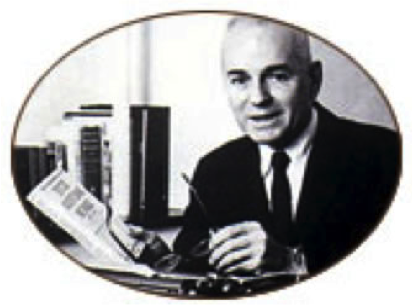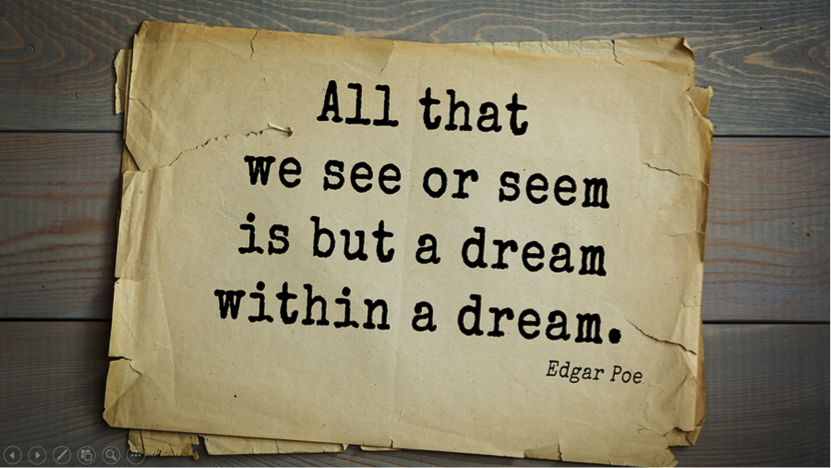Last week, we took a magical mystery tour into the fantastic world of forbidden rhetorical devices … studying metaphor and analogy … anchored words … and future pacing. Today, I’m going to indoctrinate you still further, with a few more of my favorite heretical machinations.
Reggie Samuels didn’t ask about this one, but it’s perhaps the most important prerequisite to persuasion.
Mirror and match: It’s human nature to comply with requests from people we like. If you’re a parent, you know how difficult it is to say “No” to your kid. And why do you love your kid? Because he or she reminds you of YOU!
Unconsciously – automatically – we take a shine to people who remind us of ourselves.
I’ll never forget an initial sales call I made many years ago on a prospect who spoke very slowly, almost as though he were groping around in the dark for the right words to speak. Gradually, half deliberately, half sympathetically, I started speaking in this very slow, feeling-out-loud sort of way as well. The effect was almost magical …
For several hours, I just sat there listening, every once in a while feeding his thoughts back to him slowly, reflectively. The rest of my physiology naturally harmonizing with his, and we got along famously. And then finally, when I closed on the next step in the sales cycle, he came right along with me, effortlessly.
Each time I spoke to him on the phone, or called on him at his place of business, I zoned in to his way of processing the world, used the same kinds of words and phrases he used, and for several years he basically just did what I told him to do.
His company spent several million dollars with my company, and I believe it was largely based on the rapport that we shared. This is a striking example, because of this man’s unusual mannerisms, but I believe the same thing happens unconsciously in every successful sales encounter. Even an asynchronous encounter …
 When you write in the way your prospect speaks … when you begin by saying things he agrees with … when you reveal things about yourself that demonstrate you are like him … that you have walked in his shoes … he is magnetically pulled in to the rest of your sales message.
When you write in the way your prospect speaks … when you begin by saying things he agrees with … when you reveal things about yourself that demonstrate you are like him … that you have walked in his shoes … he is magnetically pulled in to the rest of your sales message.
Matching and mirroring in sales copy can be situational, reflecting on the prospect’s circumstances, and attitudinal, echoing his existing feelings and beliefs. At best, it is both …
Here’s a particularly instructive example of matching and mirroring taken from the first few paragraphs of a well-known and highly successful ad written by the late Joe Karbo:
You think you’ve got problems? Well, I remember when I got turned down for a $200 loan. Now I lend money to the bank – Certificates of Deposit at $100,000 a crack.
I remember the day a car dealer got a little nervous because I was a couple of months behind in my car payments – and repossessed my car. Now I own a Rolls Royce. I paid $43,000 for it – cash.
I remember the day my wife phoned me, crying, because the landlord had shown up at the house, demanding his rent – and we didn’t have the money to pay him.
You can see how the target prospect sees himself in Joe, can’t you?
The really clever thing about Karbo’s opening is how each paragraph compares and contrasts pain with pleasure. This is very smart because there is a real danger when empathizing with your reader’s pain. Denial!
Too much negativity all at once and your prospect can easily hang up on your copy. It’s just too painful to deal with. Since matching and mirroring often involves harmonizing with negative states, this ad is a great example for you to model. Observe how it dips the prospect in a bucket of acid, pulls him out, dips him in, pulls him out.
How to fan the flames of desire through “nested” narrative …
Wrap your argument in story – Of all rhetorical devices, storytelling is perhaps the most powerful. Since the dawn of civilization, dramatic stories have been the primary means with which those in power have imprinted and perpetuated belief systems on the mass of humanity.
Myth – Bible stories, fairy tales, and moral fables – consumed just beyond the cradle program our thinking until the grave. They install an unconscious belief system that influences our actions and reactions for the rest of our lives.
Realize our beliefs are NOT things we think about. They are things we think with. And as a persuader whose job it is to mold and extend those beliefs in ways that make purchase decisions inevitable, doesn’t it make sense to use the same subtle techniques that created them in the first place?
By their very structure, well-told stories use the reader’s active imagination to induce a kind of sensory disassociation from the world around him. A little off balance – like a stranger in a strange land – he searches for his bearings in your words. After all, the story is about him. And if it is a good one, he soon projects himself into the action.
Naturally, this induces a kind of childlike over-reliance on the imaginative and emotional right brain. Your reader slips into reverie and begins experiencing the protagonist’s emotions as if they were his own. If they are negative emotions, he becomes dependent on the storyteller for a way out. If positive, again the storyteller holds power over him, because he wants that happiness to continue.
In this suggestible state, your authority is greatly enhanced. And it becomes very easy for your prospect to accept virtually any reasonable mechanism that promises to relieve the pain or prolong the pleasure.
 Perhaps the most talented sales storyteller of them all was John Caples. Most of us are familiar with his perennially swiped headline, They Laughed When I Sat Down At The Piano – But When I Started To Play!
Perhaps the most talented sales storyteller of them all was John Caples. Most of us are familiar with his perennially swiped headline, They Laughed When I Sat Down At The Piano – But When I Started To Play!
But I suspect few of us grasp how hypnotically powerful the storytelling that comprised the rest of that ad really is.
Watch how skillfully Caples leverages the reader’s active imagination to stimulate his emotions, fanning the flames of desire for the product …
Arthur had just played, The Rosary. The room rang with applause. I decided this would be a dramatic moment for me to make my debut. To the amazement of all my friends I strode confidently over to the piano and sat down.
“Jack is up to his old tricks” somebody chuckled. The crowd laughed. They were all certain I couldn’t play a single note. “Can he really play” a girl whispered to Arthur? “Heavens no!” Arthur exclaimed. “He never played a note in all his life … but just you watch him. This is going to be good.”
I decided to make the most of the situation. With mock dignity I drew out a silk handkerchief and lightly dusted off the keys. Then I rose and gave the revolving piano stool a quarter turn, just as I had seen an imitator of Paderewski do in a Vaudeville sketch.
“What do you think of his execution!” called a voice from the rear.
“We are in favor of it!” came back the answer, and the whole room rocked with laughter.
Then I Started To Play
Instantly a tense silence fell on the guests. The laughter died on their lips as if by magic. I played through the first few bars of Beethoven’s immortal Moonlight Sonata. I heard gasps of amazement. My friends were breathless – spellbound!
I played on and as I played I forgot the people around me. I forgot the hour, the place, the breathless listeners. The little world I lived in seemed to fade – seemed to grow dim – unreal. Only the music was real. Only the music and the visions it brought on – visions as beautiful and enchanting as the wind blown clouds and shimmering moonlight that had inspired this great composer.
It seemed as if the master musician himself were speaking to me – speaking through the medium of music – not in words but chords. Not in sentences, but in exquisite melodies.
A Complete Triumph!
Caple’s brilliant sales storytelling is pure emotion. It over-stimulates the reader’s right brain, squeezing out any room or desire for rationality.
It also uses “nested” narrative (a story within a story), which has a powerfully disassociating effect on the reader. He is no longer sitting there trying to relieve his boredom in the pages of Harper’s Monthly. Caples has given him a double fantasy with which to make his escape!
Judging from the sales this ad generated, let’s just say plenty of people took the bait.
How to install an automatic interest-retainer in your prospects’ minds that keeps them hooked on reading your copy …
Create Open Loops – The human mind hates unfinished business. It has a compulsion to see things to their logical conclusion.
Psychologists have proven this in memory tests involving wait staff in restaurants. Almost without fail, the waiters and waitresses could remember what patrons who were still in the restaurant had ordered. But almost always, they substantially forgot what patrons who had already paid their bill had ordered, even when those patrons had left the restaurant just minutes before.
Master novelists and screenwriters use this phenomenon to keep their audiences spellbound. Their stories often begin at the height of tension – with Pauline perilously bound to the railway tracks as a locomotive barrels toward her.
Just as the beautiful heroine is about to be sheared in three, the scene freezes … and you’re transported back in time to the real beginning of the story. The image of Pauline lying there in abject terror forms an open loop in your mind that keeps you hooked until the cliffhanger is resolved much later in the story.
The nested narrative in John Caples’ famous ad has this effect as well. Naturally the reader wants to know what happens after Jack finishes playing the Moonlight Sonata. They’re hooked until that tension resolves. And Caples uses that open loop to veer off in another direction, deepening the reader’s reverie, and introducing still more promise of emotional satisfaction.
I hope you’ve enjoyed this little series. The tools I’ve uncovered for you here are incredibly powerful. Please use them with discretion.
If you’d like to comment on these articles, or suggest subject matter for future EMAIL ALCHEMIST posts, please drop us a line in the comments box below. I’d love to hear from you.
Until next time, Good Selling!

Excellent article!! It touched me in so many ways, not just as a copywriter, but as an artists too!! Of course, I know these famous stories from my studies but it was good to be reminded of them again in the way you put this together….. 🙂
As usual, Daniel, you have taken me on a fascinating journey with your lesson. It is easy to learn, when the mind, is stimulated into remembering the message. Nice work, Cobber. Keep grinnin’.
Love this. Like most marketing aficionados, I was familiar with Caples’ headline. But this is the first time I’ve seen the ad itself. Thank you Daniel for your always sparkling insights.
Brilliant Daniel! This is my first read of one of your articles. I plan to read them every week and embrace the copy genius within! Time to seduce my list…
Glad you enjoyed this series guys, keep reading!